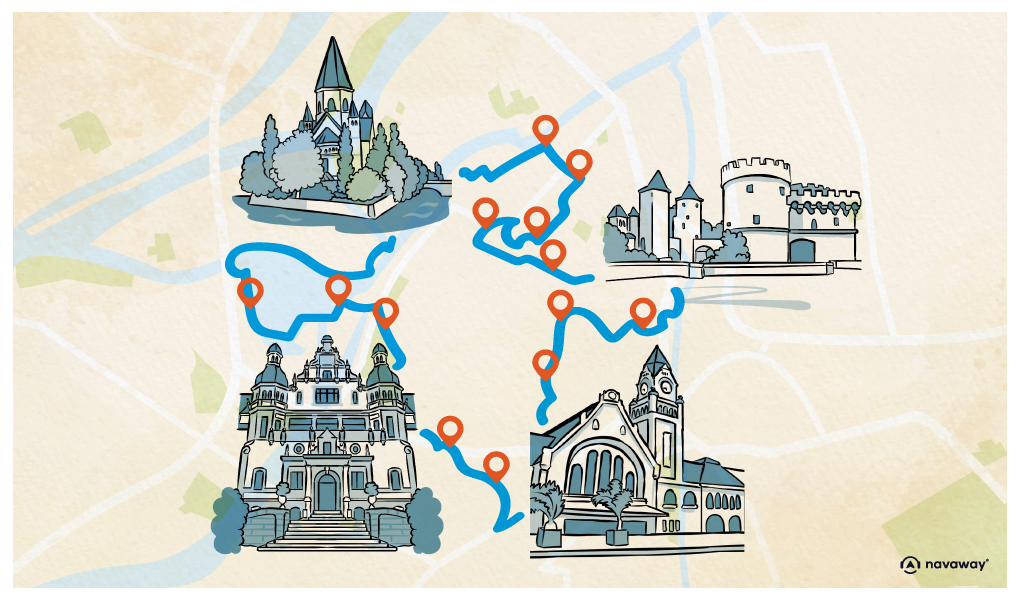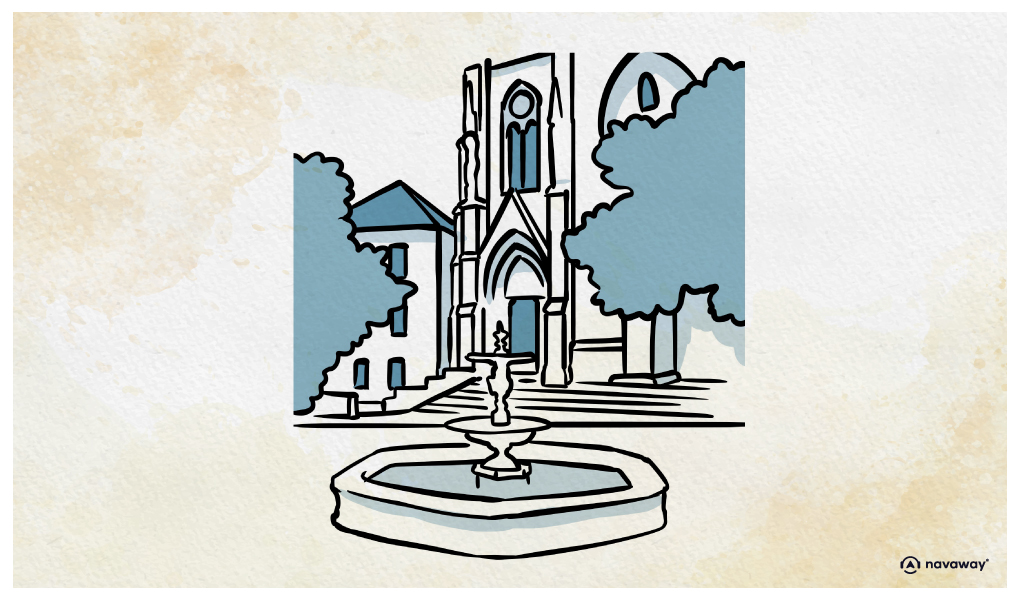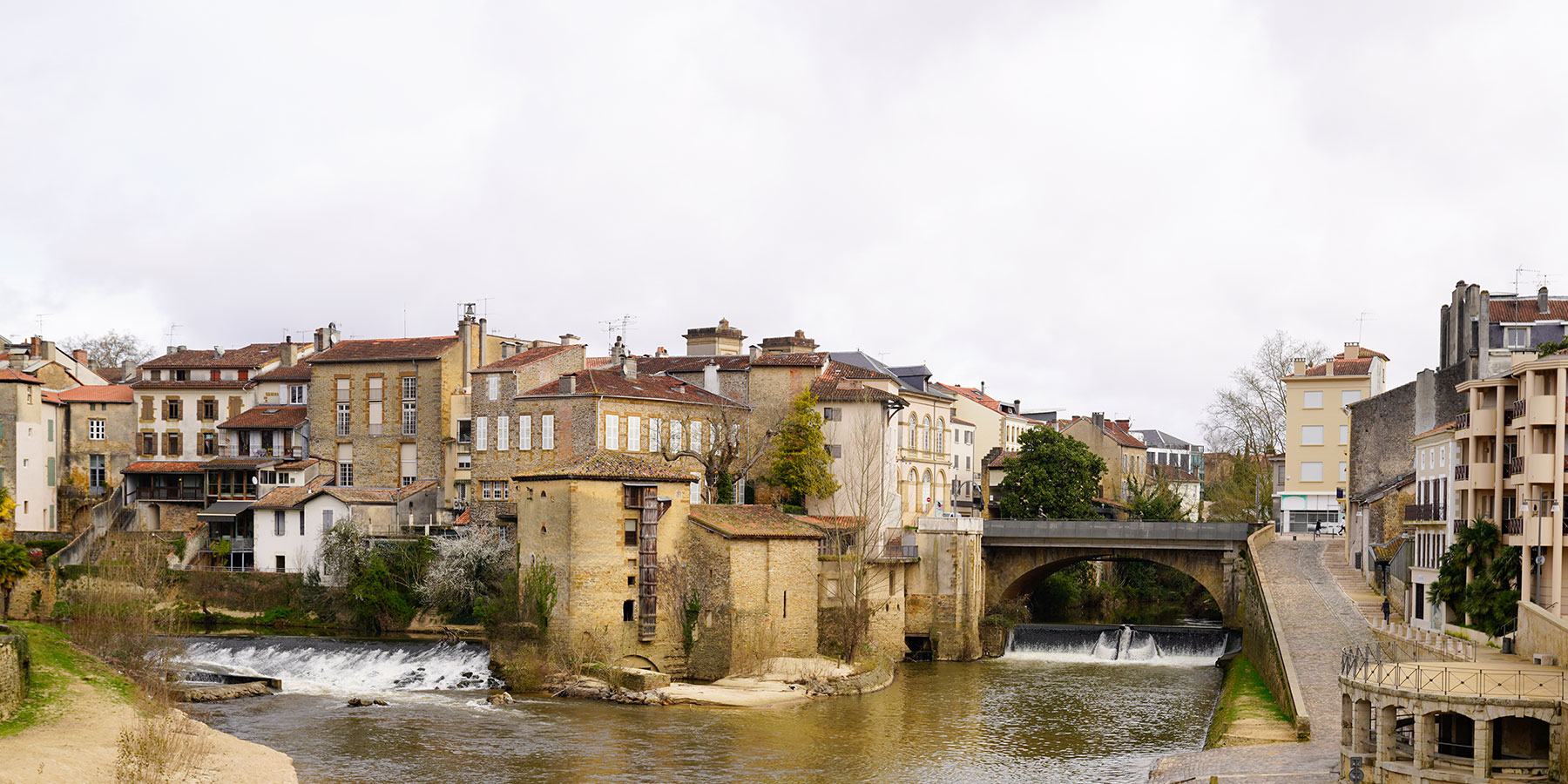
Joan of Arc Square

This point of interest is available as audio on the tour: Visit Metz, 3000 years of history
You have now arrived at Place Jeanne d’Arc, which was developed in 1905 during the reconstruction of the beautiful Sainte-Ségolène Church. At that time, the place was called Place des Quatre Maisons, in memory of the houses demolished to make way for its development. Sainte-Ségolène Church, on the other hand, is one of those religious buildings that has been extensively renovated over the centuries. Just imagine, the very first parish was built in the 9th century! The current church still retains its 10th-century crypt, 12th-century stained glass windows, and mural paintings. The beautifully decorated portal, as well as the two perfectly symmetrical bell towers, are in the Neo-Gothic style and are the result of major renovations carried out between 1896 and 1898 by the German architect Conrad Wahn. Sainte-Ségolène Church is classified as a historical monument. But then, why the heck is this square named Place Jeanne d’Arc, and not Place Sainte-Ségolène? Well, this is due to a strange story – that of the False Joan of Arc, who celebrated her wedding in Sainte-Ségolène Church. Yes, you heard that right – there was a scandal in France involving a False Joan of Arc. Imagine this: five years after the death of the real Joan of Arc on the stake, a woman arrives in a small village near Metz and claims to be the Maiden herself. Incredible as it may seem, even though the young woman’s real name is Claude, people believe her!Many individuals claim to recognize her, including some of her former comrades-in-arms, and even worse, her two brothers! Even in those days, gossip spreads quickly – it is talked about as far as in the south of France! Evidence of this was found in the form of a notarized document of a bet between two residents, one of whom said that Joan of Arc died in Rouen, while the other insisted that she was alive in Metz. Consider this, in the Middle Ages, identity theft must have been pretty common as there were no civil registries or finger prints. Still, how could people doubt the fact she was dead? She did burning on the stake in front of many witnesses, furthermore the English had taken thousands of precautions to prevent any possibility of a prisoner exchange. But I bet this still leaves you wondering how such a deception could have taken place!Well, you need tounderstand that at the time, the mere fact that a woman dressed as a man was sooo unthinkable that Claude wearing men’s clothing was enough for people to believe her. Moreover, it’s not as if the residents had ever seen a portrait of the famous Maiden. And so the deception went on, our False Joan of Arc went as far as to move to Orléans, to setle in the house that sheltered the heroine during the siege of the city. The residents bestowed treasure to her in gratitude of her role in freeingthem! The identity theft came to an end when Charles VII arrived in Orléans. It is saidthat the young woman broke down and threw herself at the king’s feet, confessing her deception. Then, in 1456, a trial for the rehabilitation of Joan of Arc was held, her death became official, and it became more difficult for Claude to deceive people. She disappeared for good, and her husband, is said to have entered a convent fading into obscurity. A surprising story behind the name of this square! don’t you think?


Discover Metz with app
An interactive guide through the most beautiful streets, squares, and districts
27 fun audioguides full of historical facts, anecdotes, and legends





Comments